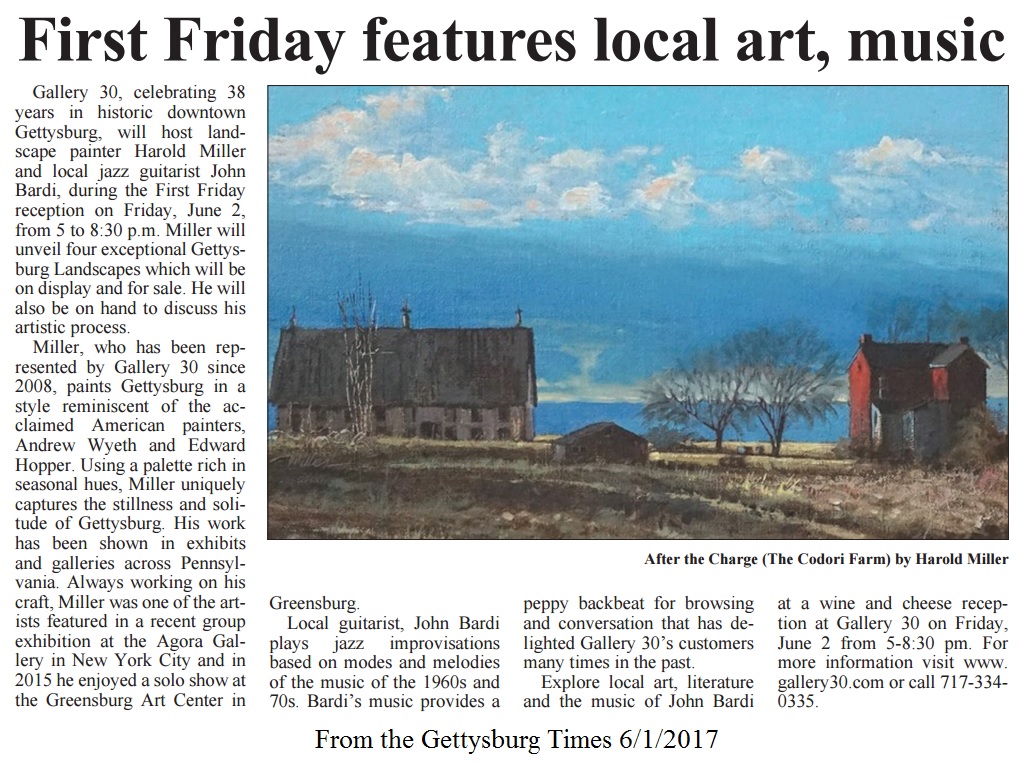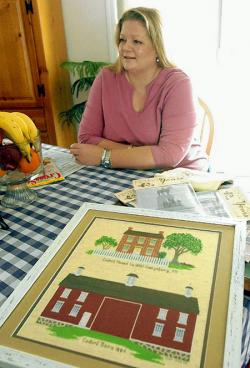The park bookstore and three cross-stitching shops in the Gettysburg area
began carrying the design, and Frost started to make plans to produce about one
or two historic pieces a year.
But shortly after the first design was released, Frost suffered a serious
accident. She fell two stories through a faulty hay-drop door in the barn and
sustained a broken back, three broken ribs, a collapsed lung and fractured her
left wrist.
After surgery, she was in physical therapy for 10 months. Despite not having
the use of her dominant hand, she said she was able to sit in a body brace for
part of the day to design patterns at the computer with her right hand.
“I had just started my business and I wasn’t about to quit,’’ Frost said.
After her recovery, she designed a pattern of the Pennsylvania memorial for
fallen Union soldiers. Later, she designed Virginia’s monument to Confederate
soldiers.
In all, she has done designs on 11 buildings and monuments and noted it takes
her three to four months to finish each one. They include two Gettysburg
Samplers, which have a number of words and phrases related to the battle and are
her top sellers.
Also, the adjacent Eisenhower National Historic Site commissioned her to
design the Eisenhower Home — where the former president and first lady lived —
as a cross-stitch pattern.
Frost also had an opportunity to work in another art form. She said a friend
in Gettysburg wrote a child’s primer on a union soldier and asked her to draw
the illustrations.
“My husband reluctantly agreed to be the model,’’ Frost said.
When her husband was transferred two years ago to the University of Nevada as
the cooperative ecosystems studies coordinator for the Great Basin, the Frost
family searched for a place where they could have horses. They moved to New
Washoe City and began making a major adjustment to their lives.
Frost, originally from American Fork, Utah, has lived in 10 states and never
has been anywhere for a long time. But she said her family’s emotional
attachment to Gettysburg was very strong.
“It was very difficult to leave. We were crushed,’’ Frost said.
Last year, she received more bad news when she was informed the park
service’s concessionaire was dropping her design patterns from its Gettysburg
store. She said she was told there was a long-forgotten policy where present or
former employees are prohibited from selling items of present or former
employees.
“It was hard to take. I told them this is one thing the Civil War offers to
women,’’ Frost said.
But she said she began looking at ways to regroup.
“My designing business started as a way for me to try to make a little money
for my family and I wanted to continue down that road,’’ Frost said. She and her
husband have two teenage daughters.
While reading an edition of Just CrossStitch magazine, she said she noted an
invitation for designers to send in résumés and the type of work they do for
possible inclusion in the publication.
“I’ve never been one to promote myself, but I thought I’d give it a chance,’’
Frost said.
She said someone from the magazine contacted her and said they wanted to do a
piece on her — including the use of an unpublished design.
Despite limited time, Frost produced a design of the Irish Brigade monument
at Gettysburg, as well as a historical house. Magazine editors featured the
design in the March/April issue along with a profile of Frost.
Since the magazine was released, Frost said she’s been getting e-mails from
people throughout the country.
Meanwhile, Frost has started what she calls the Trilby-Mina Collection, named
after two aunts of her husband. Patterns in the collection include
inspirational-type messages and sayings.
She recently introduced the collection in Utah, where there’s a major demand
geared toward the Mormon faith and culture as young girls are taught the art of
stitching.
Frost said she also does special orders and since moving to Northern Nevada
has produced a design of the Reno Arch. And she said she’s started to do
research on a Bowers Mansion design, which she hopes to finish by September.
Her design patterns, including a detailed chart on what colors to use and a
historical information sheet, retail for $8 each.


